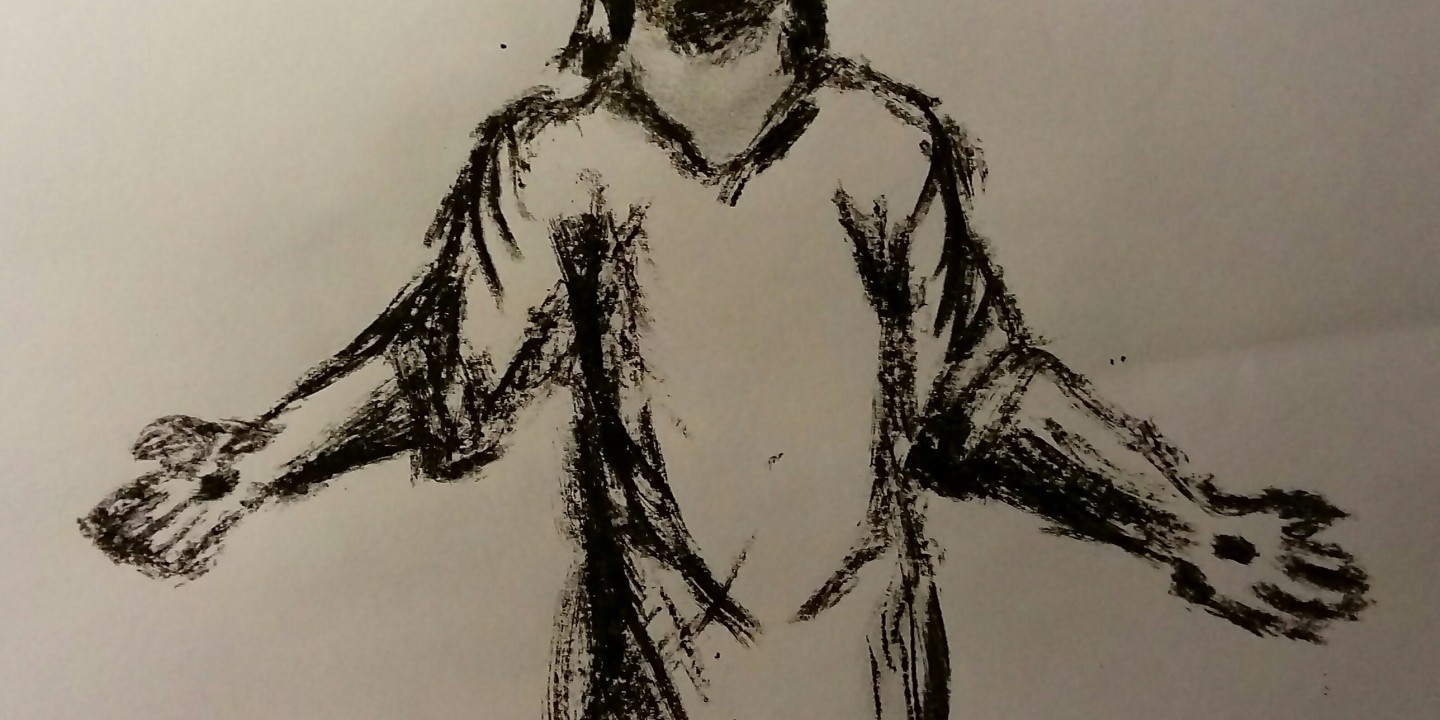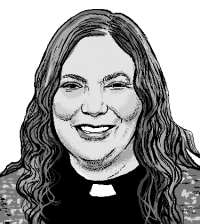See the asylum seekers’ wounds and believe
At the border, survivors of violence present their scarred bodies as testimony.

Unless I see the mark of the nails in his hands, and put my finger in the mark of the nails and my hand in his side, I will not believe.
These Easter words from John’s Gospel bring to mind my experiences on a recent trip to our border at San Diego and Tijuana near the San Isidro port of entry, the busiest border crossing between the United States and Mexico. The asylum seekers who wait to present themselves there will face what’s called “a credible fear interview.” They will try to convince people who are not likely to believe them that their life is in danger and it is not safe for them to return to their country of origin.
Although immigrants are repeatedly labeled as criminals, my experience with dozens of parents and children arriving at our border is that they are far more likely to be the survivors of violent crimes. Lacking police reports or other supporting evidence, asylum seekers are hoping to offer their scarred bodies as testimony.
I met Giselle and her 9-year-old daughter, Valeria. They looked dazed and cold, having been dropped off by ICE after dark in some parking lot and picked up by volunteers from a church group. Somebody found them jackets, oversized but warm, and Valeria sat solemnly coloring pictures of birds. Giselle told me about the video dropped off by a local gang in El Salvador that recorded her brother being tortured, murdered, and dismembered with a machete. A note promised the same end for her and her child if they did not disappear. As Giselle choked up, a volunteer came by with bottled water. This reminded Giselle of her sister, who sold bags of water in San Salvador to help support her three children. This sister was kidnapped and raped by a gang who left her wounded and naked miles outside her village.
When Giselle finished sharing what she wanted documented, it was time to eat, bathe, and change into fresh clothes. She had already apologized for being dirty; they’d had no chance to wash since leaving home many days ago. After their showers, they were supposed to head directly to another area where their beds were waiting—but Giselle insisted on coming back first, with Valeria, because she did not wish to be remembered as a victim caked with desert dust. And so I remember them, damp and smiling, radiant in their bodily testimony.
Next I met Julissa and her 3-year-old son from Honduras. When Julissa was 7, her mother died and she went to live with an aunt and cousin. They put her to work doing all the cleaning, cooking, and washing while being verbally and physically abused. A year ago, Julissa’s cousin sliced the right side of her face from ear to jawbone because he was enraged about something left unwashed. She pulled up her pink sweatshirt and showed me the scar on her side where he’d cut her as well. She lost a lot of blood and tried to file a report, but the police waved her away, afraid of gang retaliation. Having nowhere to go, Julissa stayed put—until her cousin began beating her little boy. When she protested, he threatened to kill them both if they didn’t get out of the house. They crossed the border and ended up in San Diego.
Julissa now asks me to consider the scars on her face and side. Are they bad enough? Do I think they are healing too well? The border is now a place where scars of abuse and violence are treasured as a way to prove credible fear.
These are Passiontide stories, but I saw signs of Easter too. Like Giselle, Ana is from El Salvador, where she worked in a restaurant preparing her specialty, pupusas—thick cornmeal flatbread stuffed with cheese, meat, or beans. Ana’s boss went away for a time and left her in charge of the restaurant. Before long, a gang member was holding a gun to her head and demanding that she pay the gang $500 a month, a common form of extortion. Ana explained that she was not the real owner and couldn’t pay them, but the gang members didn’t believe her. Before leaving, they shot Ana in the upper arm and warned that next time it would be the head. Ana fled within days. She didn’t even go to say goodbye to her 20-year-old son, because she feared it would endanger his life.
Today, Ana is waiting in Tijuana to present herself for asylum. While staying in a shelter, she received meals through World Central Kitchen, a wonderful “chefs without borders” organization. She soon offered to volunteer, and they recognized her culinary gifts. Now Ana has a safe place to stay and is paid a stipend.
I met her when I visited the kitchen for a day. We were prepping more than a thousand meals, and eventually I struggled to keep up with the pace. Ana noticed and offered me a seat beside her while she took a break. She showed me her method of folding napkins around spoons. Her dark hair was held up in a thin cap, as was mine. She paused to show me the wound where the gang’s bullet entered her arm. She hopes the scar will prove her case. Put your finger here in my wound and see my hands. Do not doubt but believe.
After spending a day chopping onions, mixing cheesy vegetable pasta up to our elbows in huge bins, folding napkins, and watching Ana work with a smile that rarely left her face, it was clear that she is not doing this for the money. I saw a woman engaged in defiant resistance, refusing to be objectified by pity or dehumanized as a criminal. Early in the morning, while it is still dark, Ana rises to bake bread to feed the hungry and hurting multitudes crowded in various shelters around Tijuana. Like Jesus, in the face of betrayal, Ana takes bread. With her wounded arms, she holds out life. On the border of despair, she nourishes hope.






